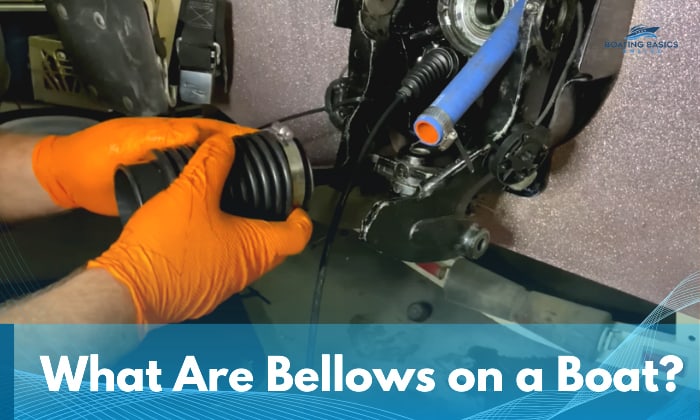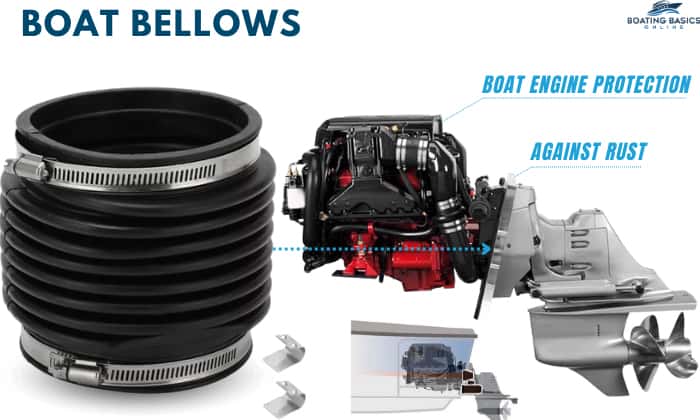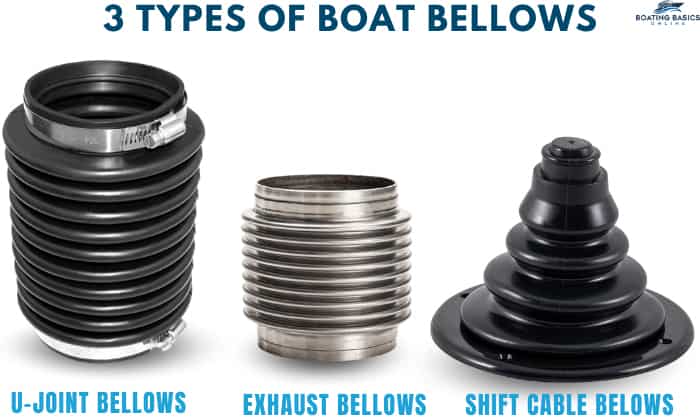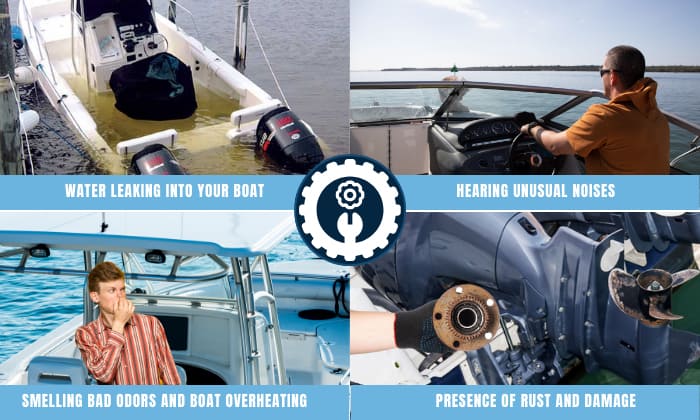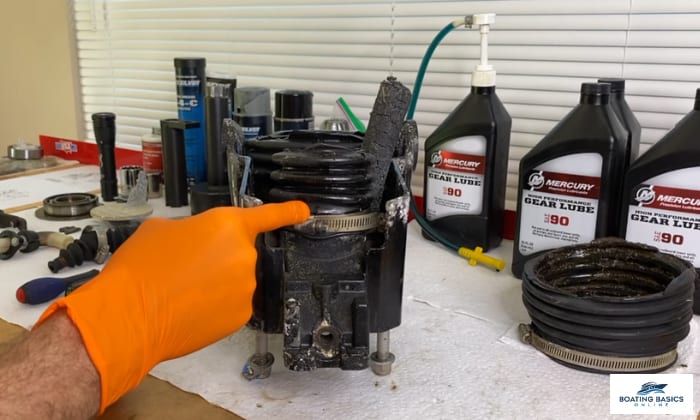Given the depth and intricacy of boating engineering, we can never really run out of boat parts to talk about. It’s great that you ask, “What are bellows on a boat?” because they’re a fairly important component – and one tied to certain serious issues on vessels.
Boat bellows are accordion-like, rubbery gaskets that impart watertight protection to stern drive vessels. They connect the interior and exterior of the boat and are where most of the wiring for the engine and other accessories is run.
Table of Contents
An Overview of Boat Bellows
Bellows on a boat, regardless of their type, are mainly used for protective purposes, particularly against the possibility of water getting to and damaging vulnerable and vital components such as accessories’ wiring (the shift cable), U-joints, and the exhaust.
As such, you will find them around these parts. A bellow’s protection against rust is what makes it important – unless – this component has already been damaged and is, ironically, causing more problems for your boat.
Types of Bellows
The boat part being protected mainly dictates the type of bellows on the vessel. For example:
- Engine bellows or U-joint bellows will typically be protecting the U-joints, and in turn, the engine and transmission.
- An exhaust bellows keeps water from leaking into the engine, since it’s connected to the latter’s compartment, as well as the exhaust. It also fulfills the dual purpose of directing gases from the exhaust through the prop.
- A shift cable below, as its name readily suggests, focuses on shielding the shifter cable.
One important thing to note about the placement of most bellows installations is that they’re practically submerged all the time (which is what often leads to problems related to them).
Why Are Boat Bellows Important?
On the whole, the importance of a boat bellows ties in with functionality. So, how does a bellows work exactly? Well, I’ve already explained that they’re essentially waterproof shields for the boat’s interior vital parts.
But I can also make a case for its ability to keep other marine debris from entering the boat. Also, you never know when a marine (or land) creature will decide to take a bite out of your boat’s components. That’s why some bellows come with pesticides.
Still, you may be wondering why they’re designed like an accordion. The flexibility ensures that they continue to fit and fulfill their protective purpose, even as the drive trims or turns while the boat is underway.
It could also be to accommodate longer cable and wiring runs for any additional accessories you decide to add.
Signs of Worn Boat Bellows
It’s solid advice to regularly check bellows on a boat due to the facts stated above. Past its necessary functionality, we also need to look at its downside, especially the fact that most bellows are placed below the waterline.
Once they become damaged, that spells trouble. After all, boat bellows leaking can potentially increase the risk of your boat sinking.
However, many argue and can prove that most exhaust bellows, in particular, don’t necessarily come with this risk because they just provide a pathway for exhaust and water to exit, unlike their U-joint and shift counterparts.
With that in mind, here are the symptoms of bad bellows you should watch out for:
- Water leaking into your boat
Although leaking water can be caused by various things, one obvious reason is cracked bellows. Assuming you’ve crossed out other causes, it may be time to check these rubbery parts.
- Hearing unusual noises
This is especially prevalent in a bad U-joint (engine) bellow, so you may want to check there first. Still, this can also arise in a faulty exhaust bellows. I’ve heard of cases where the exhaust bellows came off and a striking, weird sound is produced as a result.
If that’s the case, you’d want to have it checked out, or it could be that it just needs to be put back on.
- Smelling bad odors and boat overheating
This is a prevalent issue in exhaust bellows. If you suddenly notice a weird smell coming from the engine, it could be because water has reached the component and mixed with the fuel. This produces that pungent odor, which also tells you that the bellows have failed.
In many cases, you may notice the boat overheating as well, with or without the odor.
- Presence of rust and damage
This is another no-brainer, as rust on the engine’s parts like the bearings practically screams the bellows are no longer able to keep water out.
Some Helpful Tips if You’re Replacing Worn Bellows
It’s futile to make a specific guide on boat bellows replacement, since there’s no one-size-fits-all method that applies to every boat.
First and foremost, you need to confirm whether it already needs to be replaced. This is usually determined by how the boat was stored, but the general recommendation is to replace it every five years. That being said, here are some tips worth noting:
- You’ll likely need specialized tools like socket swivels, bellows expander tools, shift cable sockets, and bell housing clamps when doing a complete replacement.
This is why I highly recommend buying a boat bellows replacement kit that suits your particular model to make your life easier. Stick with genuine parts!
- Use alignment tools to make your installation more seamless; they’re great for jobs like installing the gimbal bearing and bellows clamp.
- Installing shift cables can be especially challenging, so don’t hesitate to ask a buddy to help you with it.
- Have a good overview of the entire process to make it smoother. The process generally begins with removing the prop and drive, as well as the exhaust housing, trim limit switch, and shift cable.
From there, begin to detach the bellows by loosening their screws, clamps, or bell housing hinge pins.
Lastly, if you decide to let a pro handle it, know that the repair cost is between slightly above $1,000 to a little over $1,700.
Conclusion
So, to sum up, the answer to “What are bellows on a boat?” is that it can be both a bane and a boon, since bellows can either protect and keep your boat from sinking or, on the contrary, be the sole cause of it. If you know how to care for these parts, they’re definitely a boon.
This is why, as a sterndrive owner, you should never overlook maintenance. More importantly, you should always invest time in learning about how such crucial components work. I hope you never tire of expanding your boating knowledge!

“My intention from the first day establishing Boating Basics Online is to provide as much help as possible for boaters who want to experience a first safe and convenient trip. So feel free to join us and share your beautiful journeys to the sea!”

